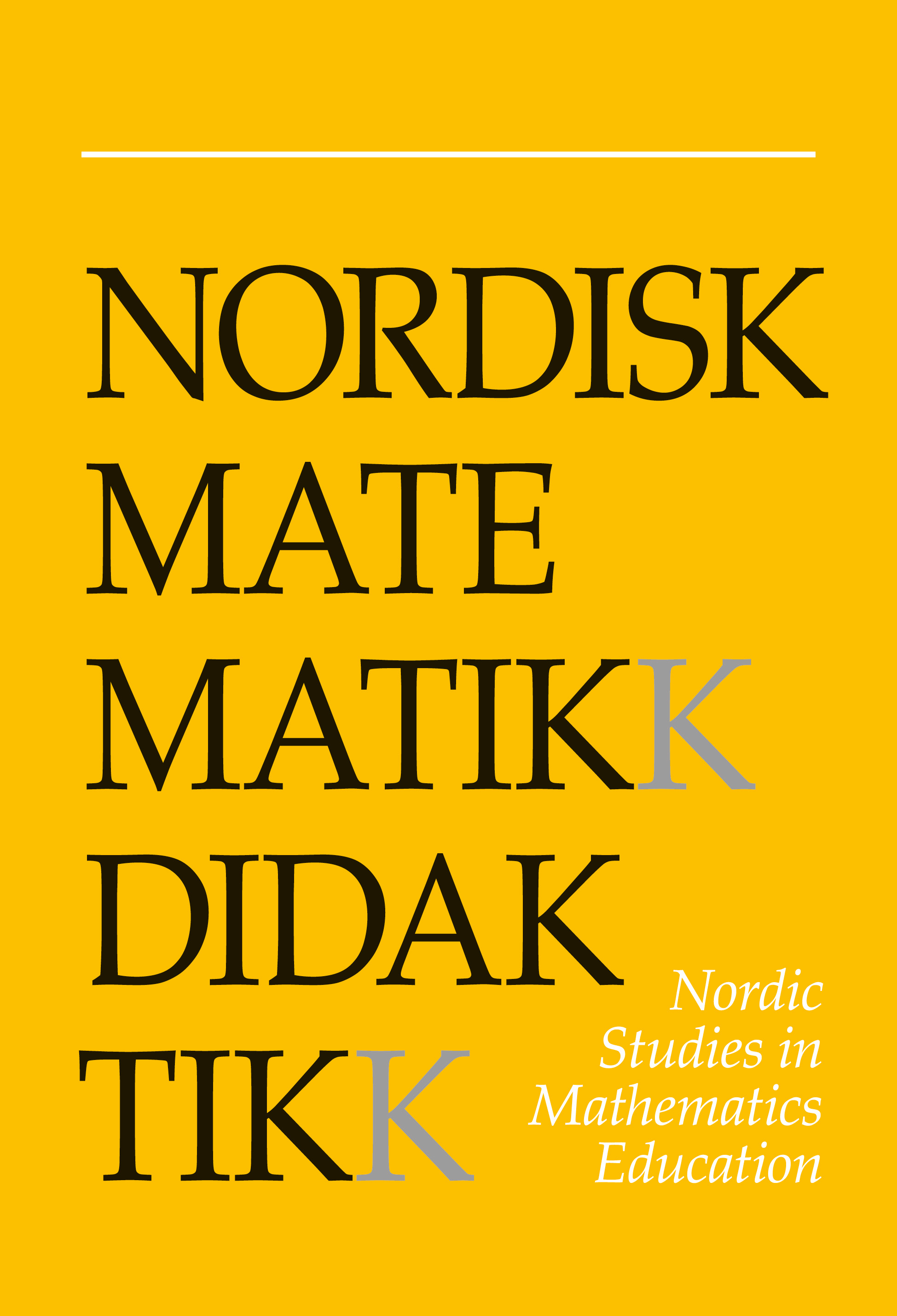The development of pre-service teachers’ self-efficacy in teaching mathematics
DOI:
https://doi.org/10.7146/nomad.v22i3.148905Abstract
Teacher efficacy has received much attention in the general field of educational research, but applications in mathematics teacher education are few. In order to deepen the understanding of the nature and development of self-efficacy in teaching mathematics (SETM) during teacher education, the study presented here followed over a period of two years pre-service teachers (PSTs) preparing to teach primary school mathematics in Norway (grades 1–7, ages 6–13). Their developing SETM was investigated by means of an instrument designed to target the core activity of teaching mathematics: helping a generic child with mathematics tasks. A comparison of responses collected from 191 novice PSTs with those from the same cohort two years later (n = 103) shows a rise in SETM in the typical PST, and indicates the nature of the development of SETM during teacher education.
References
Ball, D. L., Thames, M. H. & Phelps, G. (2008). Content knowledge for teaching what makes it special? Journal of teacher education, 59 (5), 389-407. https://doi.org/10.1177/0022487108324554
Bandura, A. (1977). Self-efficacy: toward a unifying theory of behavioral change. Psychological review, 84 (2), 191. https://doi.org/10.1037/0033-295X.84.2.191
Bandura, A. (2006). Guide for constructing self-efficacy scales. In F. Pajares & T. Urdan (Eds.), Self-efficacy beliefs of adolescents (pp. 307-337). Greenwich: IAP.
Bjerke, A. H. & Eriksen, E. (2016). Measuring pre-service teachers' self-efficacy in tutoring children in primary mathematics: an instrument. Research in Mathematics Education, 18 (1), 61-79. https://doi.org/10.1080/14794802.2016.1141312
Bond, T. (2004). Validity and assessment: a Rasch measurement perspective. Metodologia de las Ciencias del Comportamiento, 5, 179-194.
Bond, T. & Fox, C. (2007). Applying the Rasch model: fundamental measurement in the human sciences. Mahwah: L. Erlbaum.
Boone, W. J., Staver, J. R. & Yale, M. S. (2014). Rasch analysis in the human sciences. Dordrecht: Springer. https://doi.org/10.1007/978-94-007-6857-4
Charalambous, C. Y., Panaoura, A. & Philippou, G. (2009). Using the history of mathematics to induce changes in preservice teachers' beliefs and attitudes: insights from evaluating a teacher education program. Educational Studies in Mathematics, 71 (2), 161-180. https://doi.org/10.1007/s10649-008-9170-0
Charalambous, C. Y., Philippou, G. N. & Kyriakides, L. (2008). Tracing the development of preservice teachers' efficacy beliefs in teaching mathematics during fieldwork. Educational Studies in Mathematics, 67 (2), 125-142. https://doi.org/10.1007/s10649-007-9084-2
Evans, B. R. (2011). Content knowledge, attitudes, and self-efficacy in the mathematics New York City Teaching Fellows (NYCTF) program. School Science and Mathematics, 111 (5), 225-235. https://doi.org/10.1111/j.1949-8594.2011.00081.x
Hoy, A. W. & Spero, R. B. (2005). Changes in teacher efficacy during the early years of teaching: a comparison of four measures. Teaching and teacher education, 21 (4), 343-356. https://doi.org/10.1016/j.tate.2005.01.007
Klassen, R. M., Tze, V. M., Betts, S. M. & Gordon, K. A. (2011). Teacher efficacy research 1998-2009: signs of progress or unfulfilled promise? Educational Psychology Review, 23 (1), 21-43. https://doi.org/10.1007/s10648-010-9141-8
Linacre, J. M. (2014). Winsteps® Rasch measurement computer program user's guide. Retrieved from www.winsteps.com
Philippou, G. N. & Pantziara, M. (2015). Developments in mathematics teachers' efficacy beliefs. In B. Pepin & B. Roesken-Winter (Eds.), From beliefs to dynamic affect systems in mathematics education (pp. 95-117). Cham: Springer International Publisher. https://doi.org/10.1007/978-3-319-06808-4_5
Riggs, I. M. & Enochs, L. G. (1990). Toward the development of an elementary teacher's science teaching efficacy belief instrument. Science Education, 74 (6), 625-637. https://doi.org/10.1002/sce.3730740605
Ross, J. A. (1994, June). Beliefs that make a difference: the origins and impacts of teacher efficacy. Paper presented at the annual meeting of the Canadian Association for Curriculum Studies, Calgary.
Schoenfeld, A. H. (2010). How we think: a theory of goal-oriented decision making and its educational applications. New York: Routledge. https://doi.org/10.4324/9780203843000
Skemp, R. R. (1976). Relational understanding and instrumental understanding. Mathematics Teaching, 77, 20-26.
Wheatley, K. F. (2005). The case for reconceptualizing teacher efficacy research. Teaching and teacher education, 21 (7), 747-766. https://doi.org/10.1016/j.tate.2005.05.009
Wolfe, E. W. & Smith Jr, E. V. (2007b). Instrument development tools and activities for measure validation using Rasch models: part II -- validation activities. Journal of Applied Measurement, 8 (2), 204-234.
Woolfolk, A. E. & Hoy, W. K. (1990). Prospective teachers' sense of efficacy and beliefs about control. Journal of Educational Psychology, 82 (1), 81-91. https://doi.org/10.1037/0022-0663.82.1.81
Zee, M. & Koomen, H. M. (2016). Teacher self-efficacy and its effects on classroom processes, student academic adjustment, and teacher well-being: a synthesis of 40 years of research. Review of Educational Research, 86 (4), 981- 1015. https://doi.org/10.3102/0034654315626801
Downloads
Published
How to Cite
Issue
Section
License

This work is licensed under a Creative Commons Attribution-NonCommercial-ShareAlike 4.0 International License.



